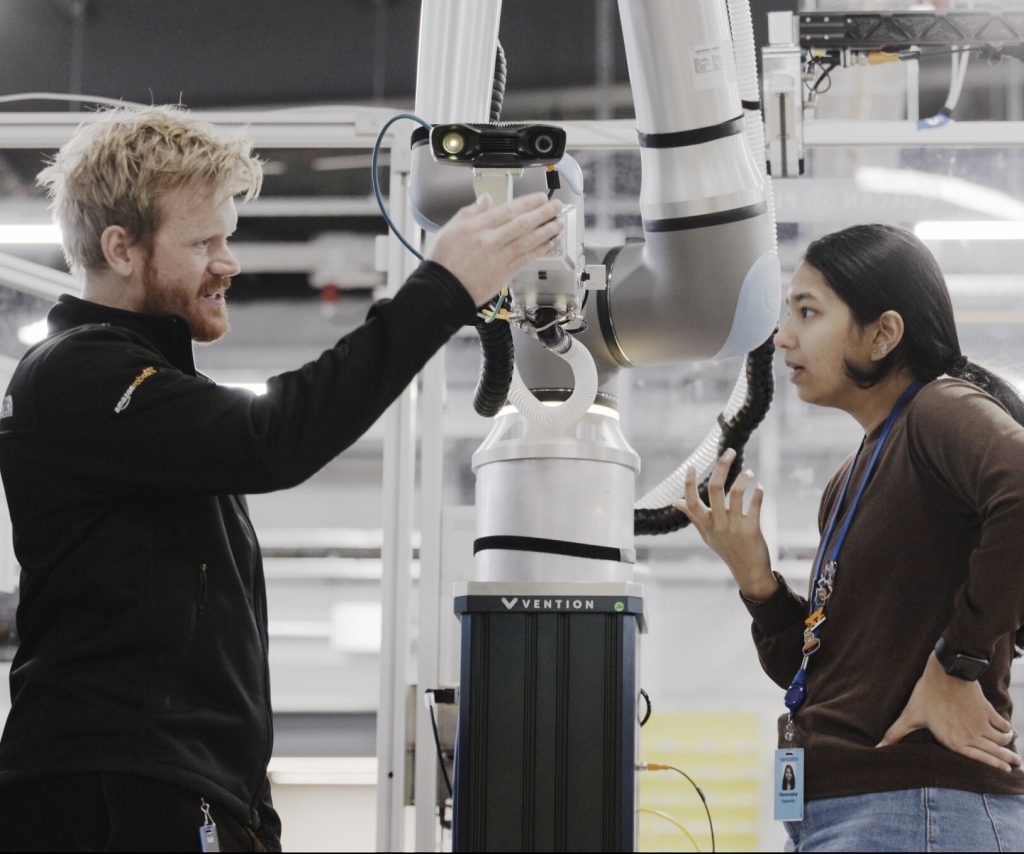CREDIT : AMAZON.COM
What happens when a robot doesn’t just follow commands but starts learning like a human—by touch, trial, and instinct?
Amazon’s newest robot, Vulcan, is doing just that. It’s not the biggest or fastest machine in their warehouse, but it might just be the smartest. Vulcan is part of a quiet revolution in robotics—where machines are starting to use common sense, not just code, to figure out the real world.
And here’s the kicker: it’s not replacing human workers. It’s being trained by them.
From Metal Arms to Curious Learners
In warehouses, robotic arms have been around for a while. They’re strong, consistent, and pretty good at repeating tasks. But Vulcan represents a different kind of evolution—it doesn’t just move boxes from point A to B. It learns how to move them based on what it sees, feels, and fails at.
Amazon says Vulcan can “perceive, understand, and interact” with a wide variety of objects—even ones it hasn’t encountered before. That’s a massive leap. In the messy real world, not everything is placed perfectly. Boxes might lean. Items shift. Humans adapt quickly—robots don’t. Until now.
Learning From a Messy World
The real breakthrough is Vulcan’s ability to learn through reinforcement—which means it improves by trying, failing, and adjusting, much like a toddler stacking blocks.
But Vulcan isn’t working in isolation. It trains alongside Amazon’s human workers. Every box picked or stowed by a person becomes a datapoint. Over time, the robot builds a library of “how humans would do it” and adds that to its own decision-making.
As one Amazon executive put it, “We’re teaching robots not just to mimic us, but to reason like us.”
So, Is This the Future of Work?
Probably. But not in the way most people expect. Vulcan isn’t about replacing jobs—it’s about redesigning them. By taking over repetitive or ergonomically tough tasks, robots like Vulcan allow people to focus on decision-making, exception handling, and process improvement.
And for Amazon, it’s not just about productivity. It’s about scaling intelligence—teaching one robot something and having hundreds of others learn from it overnight.
You can read more about how Vulcan is changing warehouse work in Amazon’s own report on their site.
🔍 Q&A Corner
Q1: How is Vulcan different from previous Amazon robots?
Unlike traditional robots that follow pre-programmed instructions, Vulcan learns dynamically by observing, interacting, and adapting in real time. It uses visual and tactile data to understand and manipulate items it hasn’t seen before.
Q2: Will robots like Vulcan take away human jobs at Amazon?
Amazon states that the goal isn’t to replace humans but to support them. Robots handle repetitive or physically taxing tasks, while humans continue to oversee, train, and manage complex situations. It’s about partnership, not replacement.
Want more human-first stories on AI?
👉 Sign up for our AI Newsletter for weekly drops of what matters in the world of artificial intelligence—minus the hype, plus the clarity.
Looking to bring this kind of thinking into your own organization?
👉 Click here for AI consulting tailored to your business – we can help.


